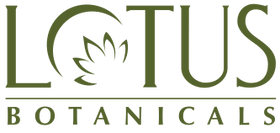
If you're looking for an effective way to address breakouts and uneven skin texture, a salicylic acid face mask offers targeted exfoliation and oil control. Salicylic acid, a beta hydroxy acid, penetrates deep into pores to break down excess oil and remove dead skin cells, making it especially beneficial for oily and blemish-prone skin.
| Brand | Salicylic Acid % | Key Ingredients | Vegan & Cruelty-Free |
|---|---|---|---|
| Lotus Botanicals | 2% | Clay, Charcoal, Niacinamide | Yes |
| Minimalist | 2% | Charcoal, Aloe Vera | Yes |
| Plum | 1.5% | Green Tea, Kaolin Clay | Yes |
Lotus Botanicals stands out for its plant-powered formulas, combining high-performance actives with soothing botanicals. All compared brands offer vegan and cruelty-free options, but Lotus Botanicals integrates niacinamide for added skin barrier support.
Apply a thin, even layer of the mask to clean, dry skin. Leave on for 10–15 minutes, then rinse thoroughly with lukewarm water. Use 1–2 times weekly for best results. Follow up with a moisturizer and sunscreen to protect freshly exfoliated skin.
Individuals with extremely sensitive skin, rosacea, or active eczema should avoid salicylic acid masks, as they may cause irritation. Always patch-test before full use, and consult a dermatologist if you have any underlying skin conditions.
Lotus Botanicals sources its ingredients from trusted suppliers and formulates products free from parabens, sulfates, and silicones. The mask is vegan and cruelty-free, and batches are dermatologist-tested for safety.
Limited stock available! Take advantage of introductory pricing and exclusive bundle offers. Pair the salicylic acid face mask with:
At Lotus Botanicals, we offer a curated selection of plant-powered skincare, including salicylic acid masks, purifying gels, and hydrating serums. Visit Lotus Botanicals to discover our full range and find solutions tailored to your skin's needs.
1. What are the benefits of using a salicylic acid face mask?
A salicylic acid face mask helps exfoliate dead skin cells, unclog pores, and control excess oil, leading to clearer and smoother skin.
2. Can salicylic acid face masks help with blackheads and whiteheads?
Yes, salicylic acid is effective at dissolving oil and dead skin inside pores, making these masks useful for reducing blackheads and whiteheads.
3. How often should you use a salicylic acid face mask?
Most people benefit from using a salicylic acid face mask 1–2 times per week. Overuse may cause dryness or irritation.
4. Is a salicylic acid face mask suitable for sensitive skin?
Sensitive skin can use salicylic acid masks if the formula is gentle and usage is limited. Patch-testing before full application is recommended.
5. Should you moisturize after using a salicylic acid face mask?
Yes, it's important to apply a moisturizer after using a salicylic acid face mask to replenish hydration and support your skin barrier.
6. Are salicylic acid face masks safe to use with other acne treatments?
Salicylic acid masks can be used with certain acne treatments, but avoid combining with other strong exfoliants or retinoids to prevent irritation.
7. Can salicylic acid face masks cause skin purging?
Some users may experience temporary skin purging as salicylic acid speeds up cell turnover, bringing underlying impurities to the surface.
8. Are salicylic acid face masks safe during pregnancy?
Low concentrations in rinse-off masks are generally considered safe, but it's best to consult a healthcare provider before use during pregnancy.
9. What salicylic acid skincare options are available at Lotus Botanicals?
Lotus Botanicals offers salicylic acid face masks and purifying gels designed for oily and acne-prone skin. You can shop these products online.
10. Does Lotus Botanicals provide vegan and cruelty-free salicylic acid masks?
Yes, Lotus Botanicals offers 100% vegan and cruelty-free skincare, including salicylic acid masks formulated with plant-based ingredients.
Phone : 1800 1200 36231
Email : care@lotusbotanicals.com
WhatsApp
: +917290031713
Free shipping on order above 599
Your payment information is processed securely.
Please beware of fraudulent messages and phone calls on behalf of Lotus Botanicals. We NEVER ask for bank details, OTPs, advance cash payments or engage in lotteries.